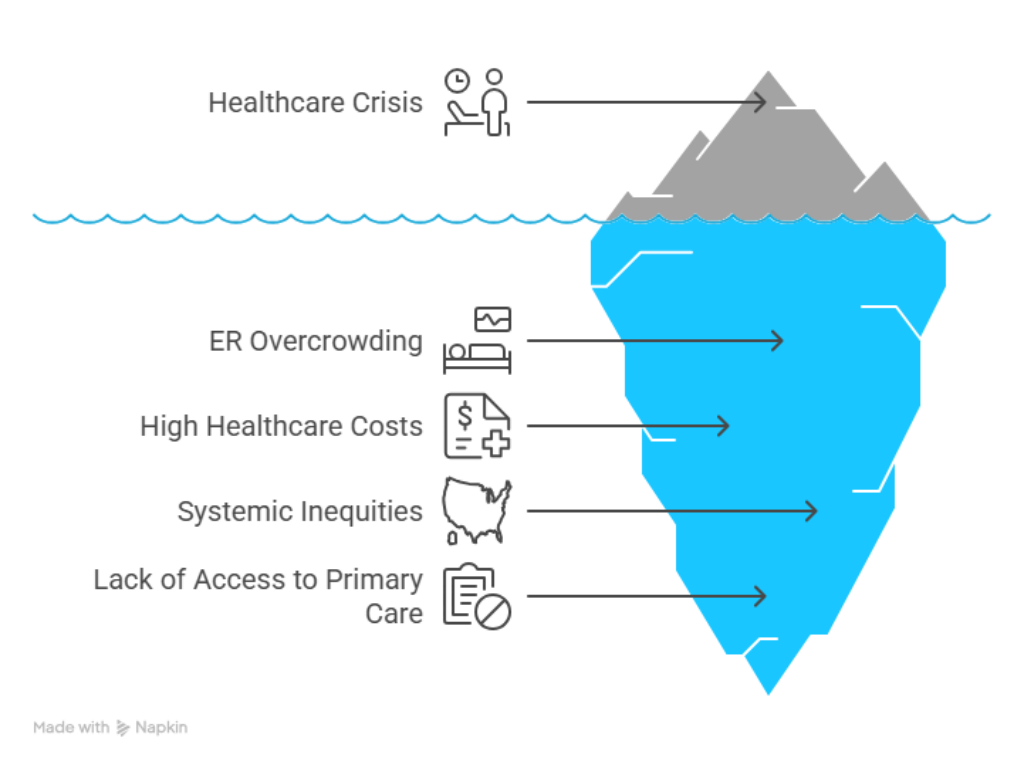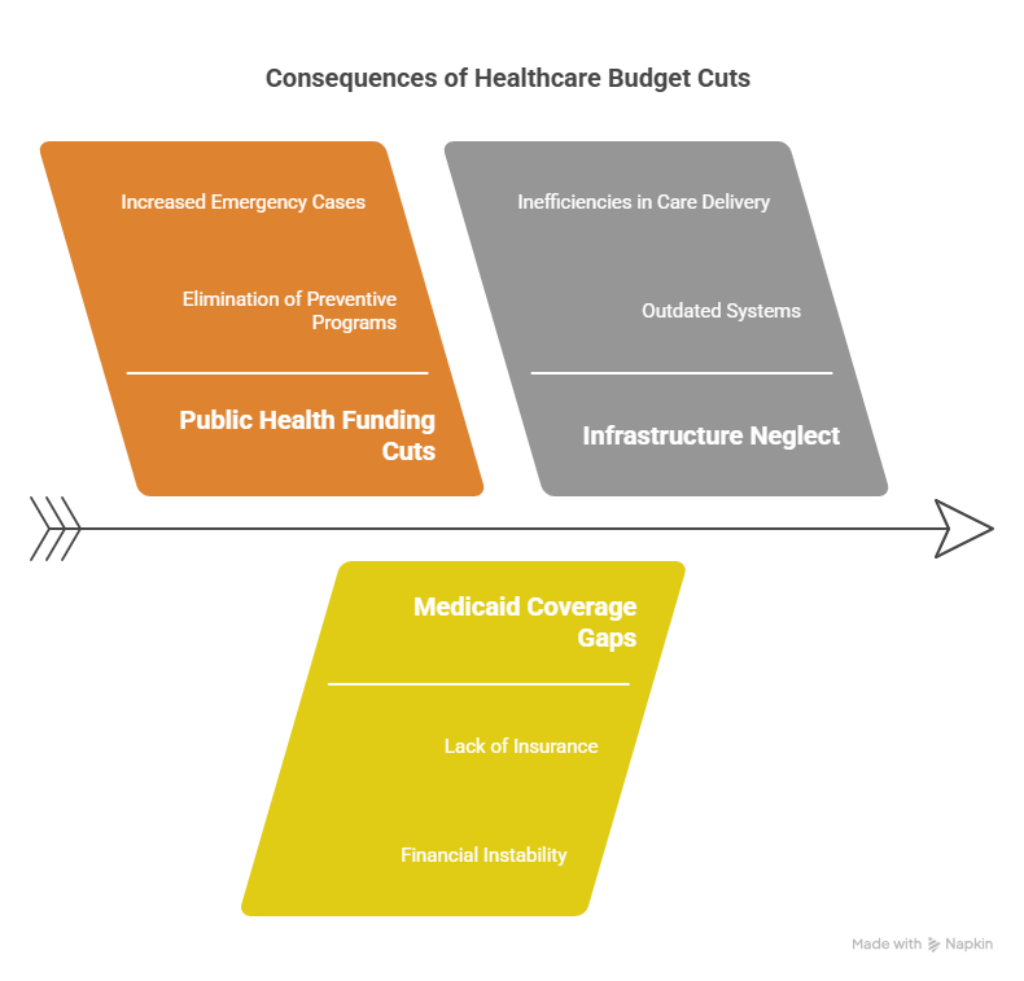
Healthcare is expensive. That’s no secret. But what often gets overlooked is this: trying to save money by cutting corners on healthcare—whether at a personal, national, or policy level—usually ends up costing more in the long run.
In the United States, people are hit with bills that can derail their finances for years. In the UK, long NHS wait times are becoming the norm, not the exception. Germany offers a more balanced approach, but even there, the system isn’t perfect.
Across the world, the same pattern shows up: when care is delayed, denied, or underfunded, the consequences don’t disappear—they just become more expensive, more complicated, and harder to fix later.
This article breaks down how different countries approach healthcare, what it really costs to “save” money in the short term, and why investing in a strong, accessible health system isn’t just good policy—it’s common sense.
Table of Contents
Healthcare Systems Around the World
Global healthcare systems differ widely in cost, structure, and outcomes. Here’s how the U.S. stacks up against key nations.
United States
- Largely private, employer-based insurance with public programs (Medicare, Medicaid). No universal coverage.
- Cost: Highest in the world—over $12,000 per person per year. Healthcare consumes ~17% of GDP.
- Challenges: High administrative overhead, medical debt, inconsistent access, and poorer outcomes despite premium costs.
Germany
- Mandatory insurance model. Most use public insurance; higher earners can choose private health insurance in Germany.
- Cost: Around $7,000 per person. Strong investment in preventive and specialist care.
- Strengths: Short wait times, high satisfaction, and efficient care delivery.
United Kingdom
- Tax-funded National Health Service (NHS). Universal and free at point of care.
- Cost: Roughly $5,500 per person. Around 10% of GDP.
- Challenges: Long waits for elective care, staffing issues, declining patient satisfaction.
Other Models
- Canada: Universal public insurance. Accessible, but wait times remain a problem.
- Australia: Mixed system with universal public coverage and optional private insurance. High rankings on efficiency and care quality.
- Switzerland: Mandatory private insurance. Universal access with high costs and strong consumer choice.
The Hidden Costs of Avoiding Healthcare

You’ve probably heard the advice: get your annual checkup, stay on top of prescriptions, don’t wait if something feels off.
But for millions of Americans, those decisions aren’t simple—they’re financial.
When the average deductible is over $1,500 and a single urgent care visit can cost hundreds, many quietly choose to wait. To hope it goes away.
Also read How AI is Shaping the Future of Healthcare
And often, it doesn’t.
Across the country, untreated conditions like high blood pressure, diabetes, and depression escalate into full-blown crises—because people delay care until it becomes unavoidable. By then, they’re not walking into a clinic. They’re being rushed to an ER. And the bill? It’s 10 times what an earlier visit might have cost.
This isn’t just a personal burden. These delays ripple across the economy. Lost workdays. Reduced productivity. Families drained by medical debt. Small issues turn into big ones—not just medically, but financially and structurally.
Preventive care is often painted as a nice-to-have. But the truth is, skipping it can lead to some of the most expensive—and painful—chapters in a person’s life.
In a country where even insured patients sometimes avoid care to dodge high out-of-pocket costs, the price of inaction keeps rising. And while the upfront “savings” may seem real, the long-term cost is anything but.
Emergency Rooms as Primary Care: A Pricey Workaround

For millions of Americans, the idea of a regular doctor’s visit feels out of reach.
Whether it’s the cost of insurance, the time it takes to get an appointment, or the lack of available providers in certain areas, primary care is often inaccessible. And when that happens, people turn to what’s left—the emergency room.
The ER doesn’t ask for an appointment. It’s open 24/7. And, by law, hospitals can’t refuse you based on your ability to pay. That makes it feel like a safety net. But in reality, it’s one of the most expensive places you can go for non-emergency issues.
The Cost of Convenience
When someone walks into the ER with a minor infection, a flare-up of asthma, or a child running a fever, the price they face is far higher than if they had gone to a clinic. A single ER visit for a relatively simple issue can run into the thousands. Even people with insurance often find themselves on the hook for high deductibles or out-of-network fees.
Many patients don’t pay these bills in full—not because they don’t want to, but because they can’t. That unpaid cost doesn’t vanish; it gets redistributed. Hospitals increase prices to cover their losses. Insurers raise premiums. Employers absorb higher costs, often passing them along to workers. It’s a cycle that hits every level of the system.
Overloading the Wrong System
Emergency rooms are built for life-or-death situations—trauma, heart attacks, strokes. But they’re increasingly crowded with patients who are there because they have nowhere else to go. This leads to longer wait times, overworked staff, and less capacity for true emergencies.
Underfunded Systems, Overwhelmed Staff: When Healthcare Starts to Break
Hospitals don’t collapse overnight. They erode—quietly—under years of underfunding, staffing shortages, and rising demand. In the U.S., that erosion is becoming more visible. Budget cuts and reimbursement limits have left many public hospitals operating on razor-thin margins. In rural areas, some have closed entirely. In urban centers, others are being stretched far beyond their limits.
The result? Fewer resources, fewer staff, and a system that’s constantly trying to do more with less.
The Cost of Understaffing
When healthcare workers are overworked, patients feel it—immediately. Nurses taking double shifts. Doctors seeing 30 or more patients a day. Burnout becomes the norm, not the exception. And it’s not just about morale. Exhausted providers are more prone to mistakes, less able to spend time with patients, and more likely to leave the profession altogether.
In some emergency departments, patients wait hours—sometimes over a day—to be seen. In clinics, it can take weeks to book a basic appointment. These delays don’t just inconvenience people. They delay diagnoses, worsen outcomes, and push patients toward urgent or emergency care—often when it’s already too late.
The Ripple Effect on Care Quality
Underfunding impacts more than staffing—it affects everything from equipment upgrades to facility maintenance to access to specialists. When budgets shrink, hospitals are forced to make hard decisions: fewer programs, fewer preventative screenings, longer turnaround times for labs, fewer behavioral health services.
What starts as a budget issue becomes a system-wide decline in quality. Patients who once had reliable care now face longer waits, rushed visits, and fewer options.
When Budget Cuts Backfire: The Real Cost of “Saving” on Healthcare

On paper, slashing healthcare budgets can look like a responsible decision.
Trimming public programs, limiting reimbursements, delaying infrastructure investments—it’s framed as efficiency. But when it comes to healthcare, what gets cut doesn’t disappear. It gets deferred, delayed, and pushed onto someone else—usually the patient.
Those “savings” end up looking a lot like higher ER use, more advanced illness, and entire communities left without access to basic care.
Public Health Takes the First Hit
One of the easiest targets during budget tightening is public health funding. Screenings, prevention programs, community health outreach—these services are the first to go. But they’re also the ones that stop problems before they become emergencies.
When those programs disappear, preventable conditions rise. Think undetected cancers, unmanaged diabetes, untreated mental health. The costs multiply as cases become more severe and expensive to treat.
Medicaid Gaps and the Cost of Being Left Out
In states that haven’t expanded Medicaid, large swaths of the population fall into a coverage gap—too poor to afford private insurance, but not poor enough to qualify for assistance. These are working people, often in service industries or part-time jobs, living one illness away from financial disaster.
When people in this gap delay care, it doesn’t save the system money. It creates cost spikes down the road—from ambulance rides, emergency surgeries, and long hospital stays that could have been avoided.
Infrastructure Left to Age Out
Hospitals, clinics, and IT systems need constant investment. When funding stalls, so does modernization. Outdated systems lead to inefficiencies—slow billing, delayed test results, poor data sharing. And those inefficiencies trickle down to the patient: longer waits, miscommunication, redundant tests, missed follow-ups.
The price of that neglect? Lost time, lost trust, and ultimately, worse outcomes.
The Illusion of Efficiency
Cutting healthcare spending might help a government balance the books this year. But two or three years later, those cuts often show up again—this time as more expensive emergencies, bigger gaps in care, and more strain on a system that was already at capacity.
What Employers Pay for Doing Nothing: Premiums, Productivity, and Missed Opportunities
For most working Americans, health coverage comes through their employer. And for companies, offering insurance is one of the biggest expenses outside of payroll. But here’s what often gets missed: not investing in quality coverage and employee health doesn’t save money. It quietly drains it.
When employees can’t afford to use their insurance, skip care, or work through untreated conditions, it affects everything—absenteeism, performance, turnover.
Rising Premiums, Diminishing Value
Every year, premiums go up. So do deductibles. But coverage? That often stays the same or narrows. Employers pay more and get less—and so do their teams. The result is a workforce that technically has insurance but still delays or avoids using it due to cost.
Over time, chronic issues go unmanaged, stress levels spike, and minor health problems become major ones. That hits productivity just as hard as it hits morale.
Healthcare Isn’t Just a Personal Problem—It’s an Economic One
When a Health System Fails, the Economy Feels It
A broken healthcare system doesn’t just affect patients—it weakens everything it’s connected to. Productivity, education, local businesses, even real estate values are shaped by the health and stability of the people in a community. When access to care disappears or becomes unaffordable, the effects ripple out far beyond the exam room.
Sick Workers, Slower Recovery
When people can’t afford to take time off to recover properly—or can’t get timely care to begin with—they stay sick longer. This slows down entire industries. It reduces output. It drives up disability claims. In sectors that rely on physical labor, healthcare gaps can lead directly to workforce shortages.
Public Programs Take the Strain
As more people delay care, costs shift to safety net programs. Medicaid, disability benefits, and subsidized emergency care take the hit. Local and state governments pick up the pieces when people fall through the cracks—and those costs come back to the public.
A Healthy System is a Stable System
There’s no economy without people. And people can’t work, spend, or contribute if they’re sick, stressed, or buried in medical debt. A strong healthcare system isn’t a luxury. It’s one of the few things that touches every other part of society. Cutting it weakens the entire structure.
Last Words
In the U.S., the real cost of healthcare isn’t just measured in premiums, deductibles, or hospital bills. It’s measured in time lost, conditions ignored, and lives disrupted by a system that too often asks people to delay care or go without it entirely.
Other countries take different approaches—some with better access, some with better outcomes, many with far lower spending. But the common thread in high-performing systems isn’t perfection. It’s commitment. Commitment to preventive care. To affordable access. To keeping people well before they become critically sick.
Cutting back on healthcare—whether it’s through slashing public programs, offering weaker coverage, or simply pricing people out—doesn’t eliminate cost. It moves it. And eventually, it multiplies it.
What looks like savings in a budget today often becomes crisis spending tomorrow.
Building a sustainable system means shifting focus: from short-term fixes to long-term impact, from last-minute treatment to early intervention, and from cost-cutting to value-creating. Anything less is just moving the problem forward—and making it more expensive.







